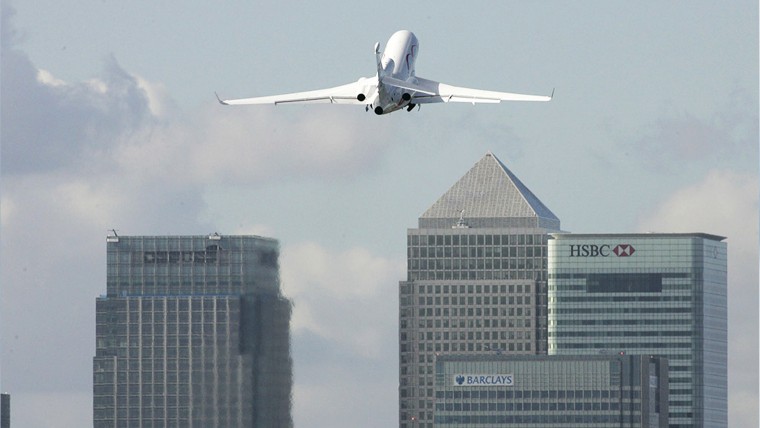When it comes to property it is, famously, all about location, location, location. The same might be said of airports.
“Well, with a location like ours, you might expect things to take off, no pun intended,” says Darren Grover, chief operating officer of London City Airport, the only London airport actually within London. “Stansted, Biggin Hill, the other main airports are all a long way from the City.”
This perhaps explains why London City Airport’s Jet Centre – its facilities for handling private jets, which Mr Grover was recruited to establish – has proven such a big success. With Mr Grover joining the airport’s management in 2001 just after 9/11 – “which was awesome timing”, he notes with a hefty dose of English sarcasm – by 2006 the Jet Centre was one of the UK’s top-three busiest, handling 14,000 private jets a year.
But then came the financial crash of 2007-8 and a resulting shift from businesses favouring smaller private jets to larger, longer-distance aircraft, which means fewer can be facilitated.
Then private jets for the lucky few have only ever just been part of the London City Airport package. Its location, after all, is as convenient for London-based business and leisure travellers alike, which perhaps explains why it expects to handle a record four million passengers this year. And if the Jet Centre has what Mr Grover calls its “90-second experience” – that a flyer should be able, in that time, to move from sitting in a car to sitting on their aircraft – then the rest of the airport operates under a similar 20-minute rule for its commercial flights.

London City Airport, is the only London airport actually within London
“That ease of experience is something we actively promote,” says Mr Grover, who notes how passenger surveys consistently record punctuality of flights as their number-one concern, which is good news given that London City Airport is the UK’s most punctual.
Our whole focus is on making the process so fluid you don’t notice how fast it is
“It’s a cliché, but time is money. Why should anyone give up two hours of their day to sit in our lounge? Let’s face it, nobody wants to do that. Our whole focus is on making the process so fluid you don’t notice how fast it is. And we do that by modelling everything to within an inch of its life.”
He isn’t kidding. If new seating goes into the airport, the ability to negotiate you and your trolley’s way between it will be factored into the timings of the entire operation. The latest tech is playing a key part too with bag drops, for instance. Getting to security should take no more than a minute and new technology should allow the 130 or so passengers typically processed by each X-ray machine an hour at other airports to be more than doubled to 300 or more at London City.
“It’s about managing a long chain of events,” says Mr Grover. “You have to think from the very front how any change will affect the end of the process.”
The airport is about to begin a comprehensive £200-million expansion programme that will almost double its flight capacity. It is major building work, including marine piling. But the result is likely to put London City, so often overshadowed by the big guns of Gatwick and Heathrow, more firmly in the limelight.
“I’d love to say the way we work is a template for how other airports might operate,” says Mr Grover. “But the truth is we’re the great product of an exceptional set of circumstances. Everything just comes together.”

